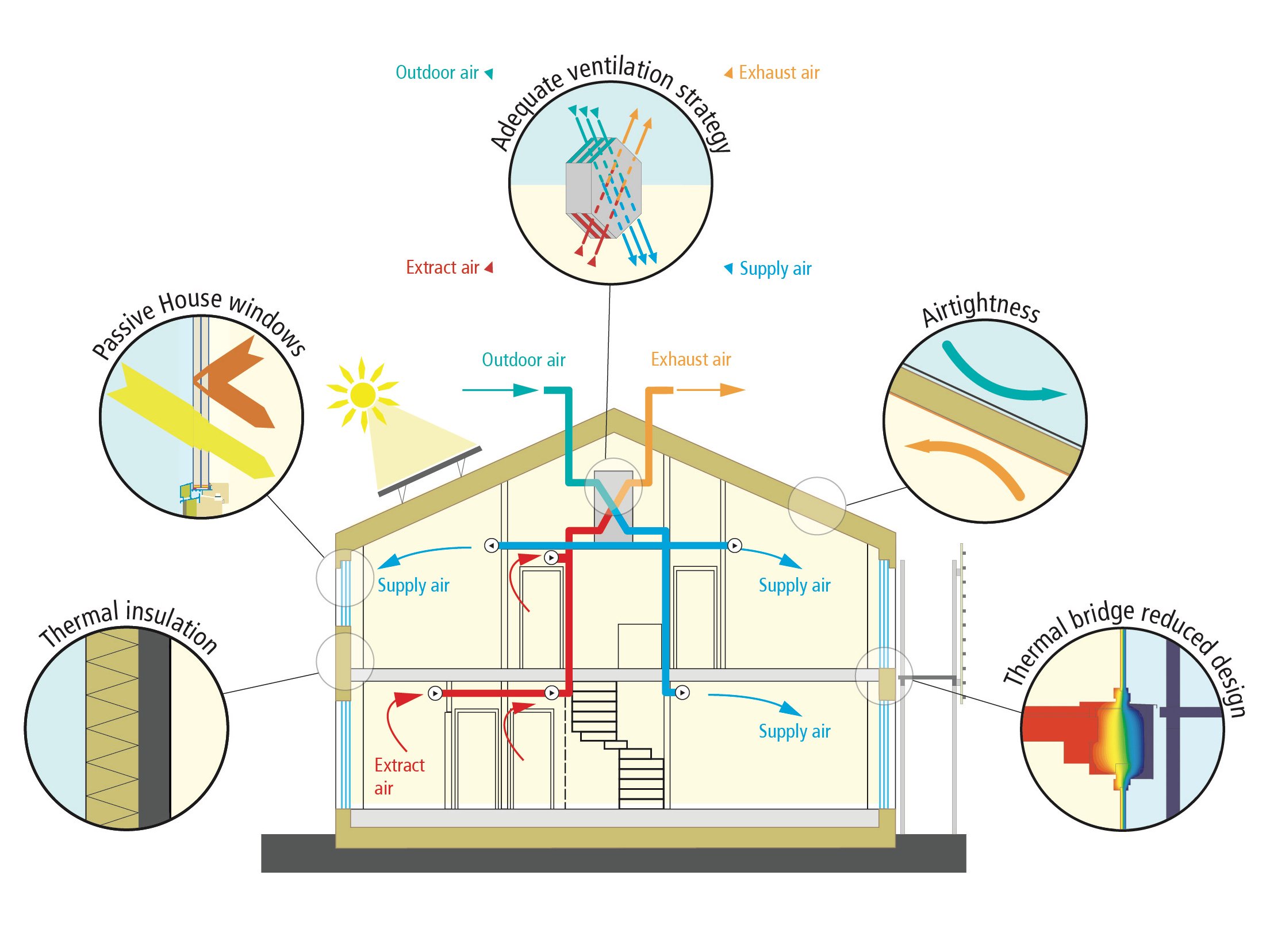Why Passive House?
Given the urgent need to reduce carbon emissions caused by our built environment, one of the highest standards buildings can be designed to is Passive House (or PassivHaus) - a German-born, internationally recognized, standard for high-performance, energy-efficient building design.
Passive House follows an ‘envelope first’ approach, meaning that the building envelope must meet strict standards for air-tightness, insulation and windows (usually triple glazed). On top of this, passive house buildings use highly-efficiency ventilation systems known as “energy recovery ventilators” (ERVs) which capture and re-use heat that would otherwise be released into the atmosphere.
The result is a building which keeps heat in in the winter, and keeps it out in the summer - and most importantly, consumes up to 80% less energy than a ‘conventional’ building of the same size. In addition, Passive House buildings boast superior health and comfort for residents, since fresh, filtered air must be provided to every living and bedroom.
Passive House design principles. Source: PassivHaus Institut

